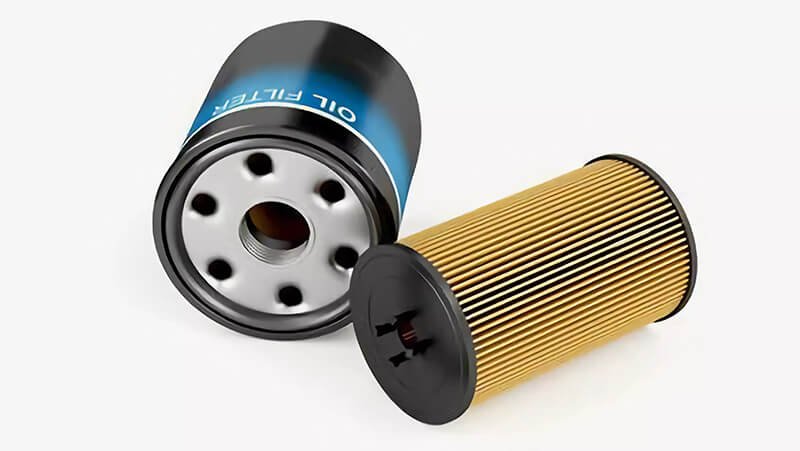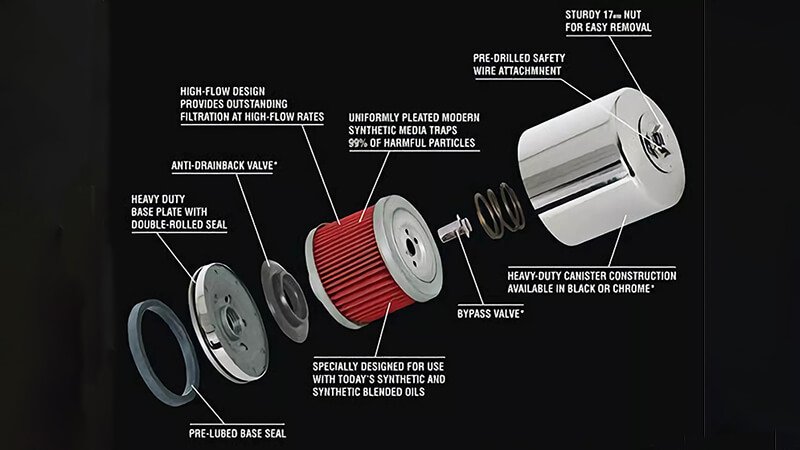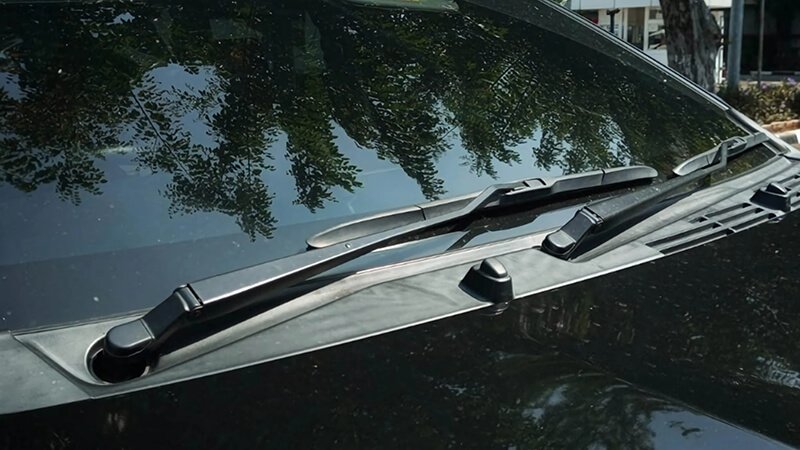Many car owners assume that when they pour new engine oil into their vehicle, it immediately passes through the oil filter. However, that's not how the process works. In this article, I will clear up some common misconceptions about engine oil and its path through the engine, focusing on the role of the oil filter.
When you pour engine oil into your car, it does not first pass through the oil filter. Instead, the oil flows into the sump pan, and the oil pump draws it from there. Only after this does the oil go through the filter before being distributed to the engine components.
Understanding the flow of oil in an engine is important to knowing how your oil filter works. Let’s dive deeper into the process of how oil interacts with the filter and the essential role the filter plays in maintaining your engine’s health.

Does engine oil go through the filter first?
The oil filter plays a crucial role in keeping your engine running smoothly, but it doesn't receive the oil first. Let’s explore how engine oil flows through your vehicle and how the oil filter fits into the process.
No, when you pour new engine oil into your car, it doesn't immediately pass through the oil filter. The oil enters the sump pan first, and only after being drawn by the oil pump does it pass through the filter before being distributed to the engine components.
Many car owners mistakenly believe that oil flows directly through the oil filter as soon as it is added. However, the oil is first directed into the engine's sump pan, which acts as the reservoir for the oil. The oil pump1, located at the bottom of the engine, is responsible for drawing the oil from the sump pan.
Once the oil is drawn into the pump, it is pushed through various engine components, including the oil filter. The filter's primary function is to remove contaminants, such as dirt, metal particles, and other debris, that could damage engine components. After passing through the filter, the oil continues to circulate through the engine, lubricating various parts like the pistons, camshaft, and crankshaft, ensuring smooth operation.
The oil filter works under pressure as it captures impurities that could clog the engine's moving parts. Therefore, even though the oil doesn't pass through the filter first, the timing of the filtration process is critical. If the filter fails to capture these contaminants effectively, it can lead to engine damage over time.
Flow of Oil in the Engine
To better understand how oil flows through the engine and oil filter2, let’s break down the process step by step:
| Step | Description |
|---|---|
| 1. | Oil Pouring: New oil is poured into the engine, entering the sump pan. |
| 2. | Oil Pump Activation: The oil pump draws oil from the sump pan. |
| 3. | Oil Filter: After being drawn by the pump, the oil passes through the oil filter. |
| 4. | Lubrication: Clean oil circulates through the engine components, providing lubrication. |
| 5. | Return to Sump: Oil eventually returns to the sump pan3, where it is recirculated. |
This simplified process illustrates how the oil filter plays a role in removing contaminants from the oil, but it's not the first place the oil goes.

Do you put oil in the oil filter before putting it on?
One question that often arises during an oil change is whether you should add oil to the oil filter before installing it. This is a common practice for many car enthusiasts, but is it necessary? Let’s take a look.
Yes, it is a good idea to put a small amount of oil in the oil filter before installing it. This helps to ensure that the filter is properly lubricated and ready to function immediately after the engine starts. However, it’s not required, and your engine will still work without this step.
While it's not strictly necessary to add oil to the oil filter4 before installation, many mechanics recommend it for a few important reasons. When you replace your oil filter, it’s important to avoid running the engine without any oil in the filter. If you don’t pre-fill the filter, it may take a few moments for oil to travel through the filter and start circulating throughout the engine.
This initial delay could lead to a brief period of insufficient lubrication5, which can put strain on engine parts, especially the bearings. Adding a small amount of oil to the filter before installation ensures that the oil filter is primed and can start working right away, providing the necessary lubrication to the engine components. This also helps reduce the risk of dry starts6, which can cause unnecessary wear and tear on your engine.
To pre-fill the filter, simply pour a small amount of fresh oil into the filter until it is about halfway full. You can also lubricate the rubber gasket with a little oil to ensure a better seal when you screw it onto the engine.
Why Pre-Filling the Oil Filter Helps
| Reason | Explanation |
|---|---|
| 1. | Prevents Dry Starts: Ensures the filter is primed and ready to start filtering immediately. |
| 2. | Reduces Engine Wear: Avoids a moment of unlubricated components during engine startup. |
| 3. | Improves Oil Flow: Helps establish a continuous oil flow to the engine, especially during the initial moments. |
| 4. | Lubricates the Gasket: Adds lubrication to the rubber gasket, ensuring a better seal. |
By pre-filling the filter, you ensure that the engine oil begins circulating immediately without causing harm to sensitive engine parts.

How does oil pass through an oil filter?
The oil filter’s primary job is to keep contaminants out of your engine, but how does the oil actually pass through it? Let’s take a closer look at the mechanics of oil filtration and the importance of a properly functioning oil filter.
Oil passes through the oil filter by first entering the filter housing, where it is directed through a series of internal channels. The filter media (often paper or synthetic material) traps contaminants, allowing only clean oil to flow out and continue circulating through the engine.
Oil filters are designed with an internal structure that allows oil to pass through while trapping contaminants. When oil enters the filter, it first passes through an inlet valve into the filter housing. From there, it moves through a filter media7—usually made of paper or a synthetic material that is designed to capture dirt, metal particles, and other impurities.
The filter media acts like a sieve, allowing only clean oil to pass through. As oil flows through this material, contaminants are captured and held in place. Once the oil has passed through the filter media, it exits the filter through an outlet valve and continues circulating through the engine. This ensures that only clean, debris-free oil reaches the engine components, protecting them from damage.
The effectiveness of an oil filter depends on several factors, including the size and type of filter media, the surface area of the media, and the flow rate of the oil. A good quality oil filter will capture smaller contaminants that could cause damage to the engine, while still allowing oil to flow freely at a rate that ensures proper lubrication.
The Filtration Process
The oil filtration process8 is broken down into several stages:
| Step | Description |
|---|---|
| 1. | Oil Entry: Oil enters the filter through the inlet valve. |
| 2. | Filtration: Oil passes through the filter media (typically paper or synthetic). |
| 3. | Contaminant Capture: The filter media traps dirt, metal, and other particles. |
| 4. | Clean Oil: Clean oil exits the filter and returns to the engine’s circulation system. |
The process relies on the filter media’s design, which helps maximize the surface area for contaminant capture9 without hindering oil flow. This balance is essential for the engine’s overall performance.

Can oil pass through filter paper?
Filter paper is commonly used in oil filters, but can oil really pass through it? It seems counterintuitive, but the answer is yes. Let’s break down how this works and why filter paper is an effective material for oil filtration.
Yes, oil can pass through filter paper, which is designed to allow the oil to flow while trapping contaminants. The paper’s structure contains tiny pores that are small enough to capture debris but large enough to let the oil flow through it without restriction.
Filter paper works by using its unique structure to separate particles from the oil without impeding its flow. The paper is made up of tiny fibers that create small pores. These pores are small enough to trap larger particles, like dirt and metal shavings, while still allowing oil to pass through.
The reason filter paper is so effective is due to its density and structure. The tiny pores are just the right size to trap contaminants, while the overall structure allows oil to flow through at a rate that ensures proper engine lubrication10. The filtration process relies on the oil flowing through the filter paper, where it encounters the fibers that hold contaminants.
While filter paper may seem fragile, it is designed to withstand the pressures and temperatures of the engine environment. It can trap a significant amount of debris before it becomes clogged, at which point the filter must be replaced. The effectiveness of the filter paper11 in trapping contaminants is one of the reasons why regular oil changes and filter replacements are so important for maintaining engine health.
The Role of Filter Paper in Oil Filtration
| Property | Benefit |
|---|---|
| Pore Size | Small enough to capture contaminants but large enough to allow oil flow. |
| Surface Area | Provides a large surface area for contaminant capture, ensuring effective filtration. |
| Durability | Designed to handle high engine temperatures and pressures without degrading. |
| Flow Rate | Allows oil to flow at the correct rate while filtering contaminants. |
The combination of these properties makes filter paper an ideal material for oil filtration12 in automotive engines, ensuring that the oil remains clean while continuing to lubricate and protect engine components.

Conclusion
In conclusion, the engine oil 13 you pour into your car does not pass through the oil filter first. It enters the sump pan and is drawn into the engine by the oil pump. The oil then passes through the filter before circulating through the engine, ensuring that it is free of contaminants. Pre-filling the filter with oil can help reduce the risk of dry starts, and the filter paper inside the oil filter plays a crucial role in trapping impurities while allowing the oil to flow freely. Regular oil changes and timely filter replacements are essential for keeping your engine in top condition.
-
Discover the importance of the oil pump in ensuring proper lubrication and engine function. This resource will enhance your knowledge. ↩
-
Understanding the oil filter's function is crucial for maintaining engine health and performance. Explore this link to learn more. ↩
-
Learn about the sump pan's role as an oil reservoir and its significance in engine operation. This information is vital for car maintenance. ↩
-
Understanding the significance of pre-filling an oil filter can help you maintain your engine's health and performance. ↩
-
Learning about the effects of insufficient lubrication can help you prevent engine damage and ensure longevity. ↩
-
Exploring the impact of dry starts can provide insights into best practices for engine maintenance and care. ↩
-
Understanding filter media is crucial for selecting the right oil filter for your engine's needs. ↩
-
Exploring the stages of oil filtration can help you appreciate how your engine stays protected from contaminants. ↩
-
Learning about contaminant capture can enhance your knowledge of engine maintenance and filter efficiency. ↩
-
Discover the critical role of engine lubrication in preventing wear and tear, enhancing vehicle performance. ↩
-
Explore how filter paper effectively separates contaminants from oil, ensuring engine health and performance. ↩
-
Learn about the oil filtration process and its importance in maintaining engine efficiency and longevity. ↩
-
Know all details about Oil filter from Runex, clicking this link to get your best price. ↩













